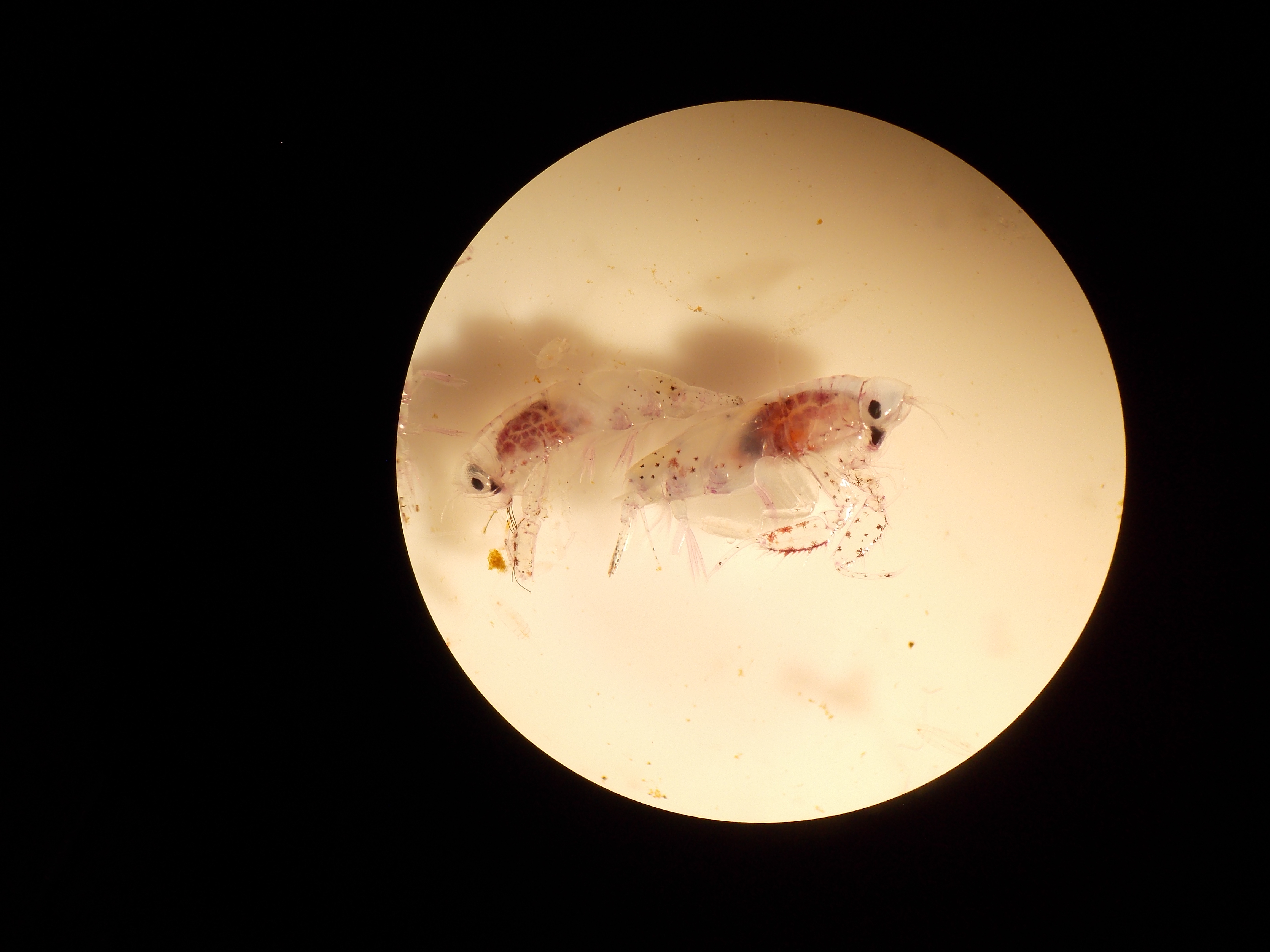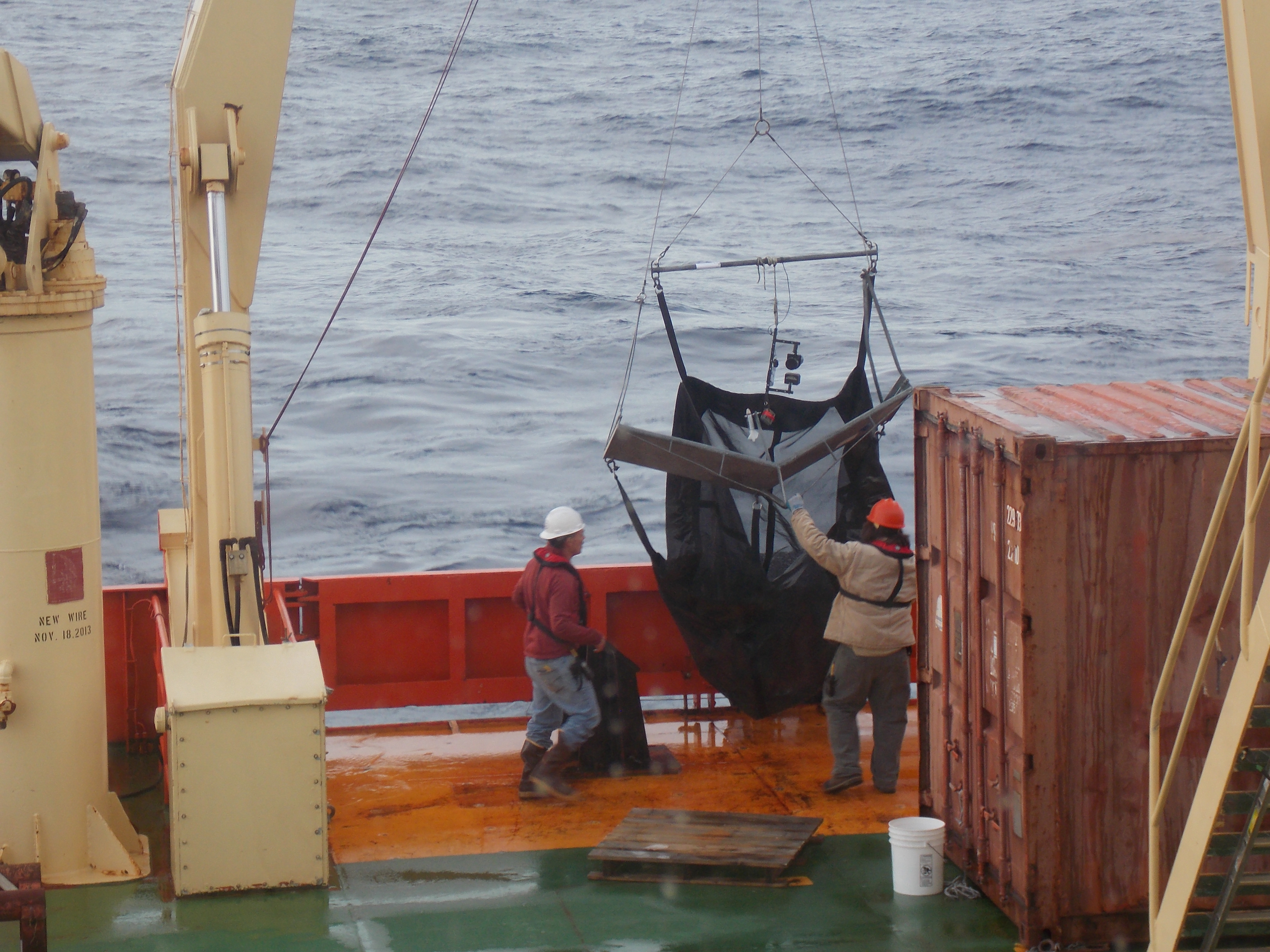By Jamie Sibley Yin
Dr. Valerie Loeb is an adjunct professor at Moss Landing Marine Labs. Currently, she functions as an independent Antarctic ecosystem research scientist collaborating with Jarrod Santora of UC Santa Cruz. In April, she headed out to sea with a new NSF funded project entitled "Pilot Study: Addition of Biological Sampling to Drake Passage Transits of the 'LM Gould'". The following are updates from the field by Jamie Sibley Yin who is in charge of communications.
April 9th, 2015 - Northern Drake Passage

Our first net tow scheduled for 2am was cancelled. I breathed a sigh of relief. I was nervous about sorting and identifying species of zooplankton I had never seen before, staying up late into the night, and working with no end in sight.
The tow didn’t actually get cancelled, but got pushed back to 9am. We eventually dropped our net in the water at 11am. The net we use is called a Isaacs Kidd Midwater Trawl and is a vast swath of tough black nylon suspended by cord that hangs from a large metal hook. The whole contraption looks like an off-kilter puppet. The marine technicians are the ones that actually deploy our nets. It’s time. The ship slows to a crawl, the net slithers off the back deck into the icy waters. Half an hour later the cod end is delivered to us in a bucket. The cod end is a thick white plastic container with mesh holes. It’s attached at the end of the net and the unfortunate critters that don’t swim away are trapped there. The sample is a pink wriggling gelatinous blob. We dump it into another container and add seawater. Copepods, krill, amphiphods buzz around the dish, relieved to be in salty water once again. The salps, jelly fish, and chaetognaths are already dead. We pick them out with tweezers and count them. After sorting, counting, and recording all organisms in the sample except for the tiny copepods we are done. The stations were we sample are five hours apart going full speed on the boat. We have one hour to recuperate before the next station.

We sampled six of the nine stations planned for the southbound transit. It was a brutal two days as we processed samples around the clock, catching two, maybe three hours of sleep when we could. I was not enthusiastic about missing my precious sleep, but the night samples were filled with loads of small shiny fish, called myctophids, which were so cool I soon forgot my lack of sleep.
The ship journey overall was quite calm except for our very last day in transit. Waves pummeled the side of the boat and splashed my window on the third floor, snow flew sideways outside, it was difficult to even stand without bracing myself against a wall. My productivity on the ship fell to zero as I all my focus turned to just functioning. Peering through a microscope and trying to sort krill is no easy task when the water in your petri dish sloshes from side to side every time the boat goes through a wave. Books and DVDs hurled themselves from the shelves in the lounge. People slid off the leather couches as the boat continued to rock. It felt like a fun house—one that was not so fun and that you couldn’t leave.

